Erigeron pumilus (Shaggy Fleabane) - photos and description
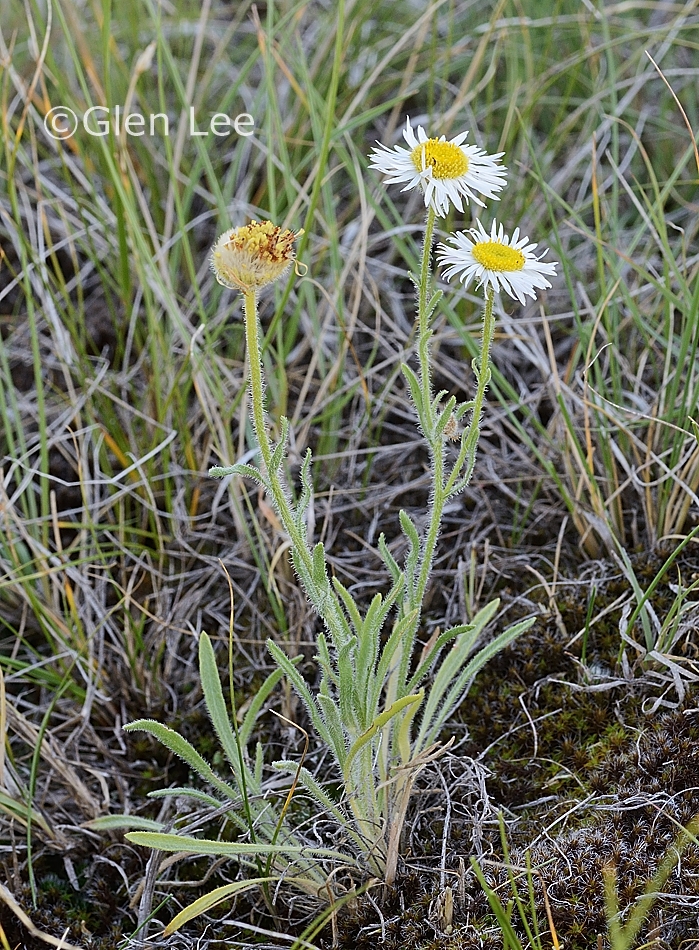
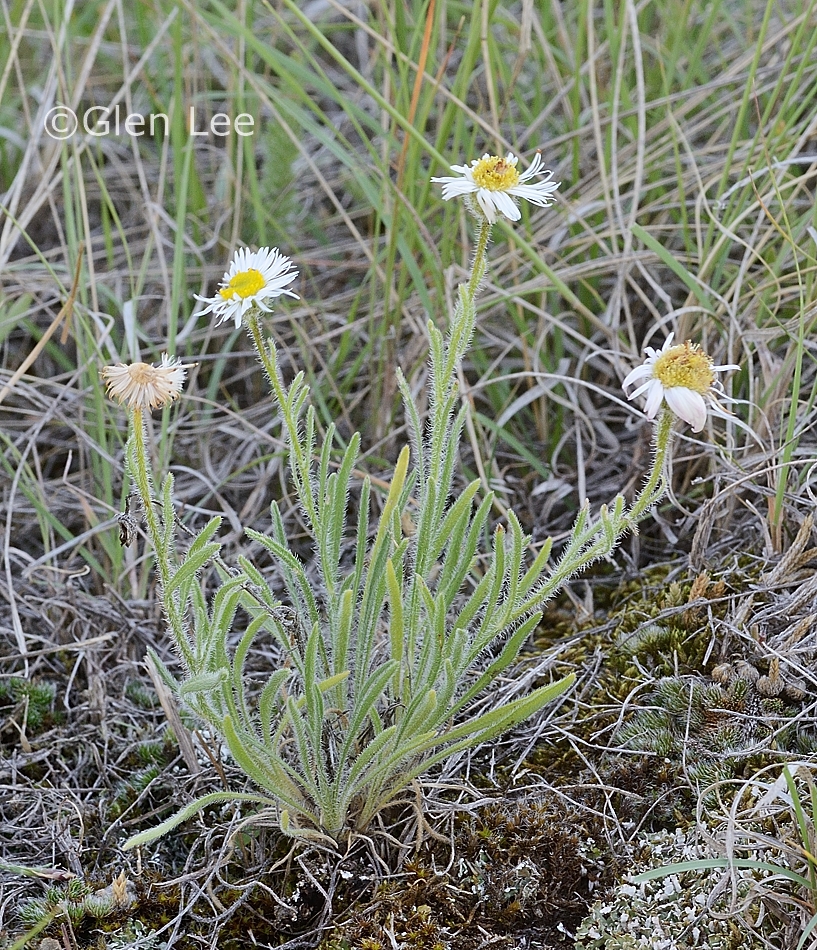
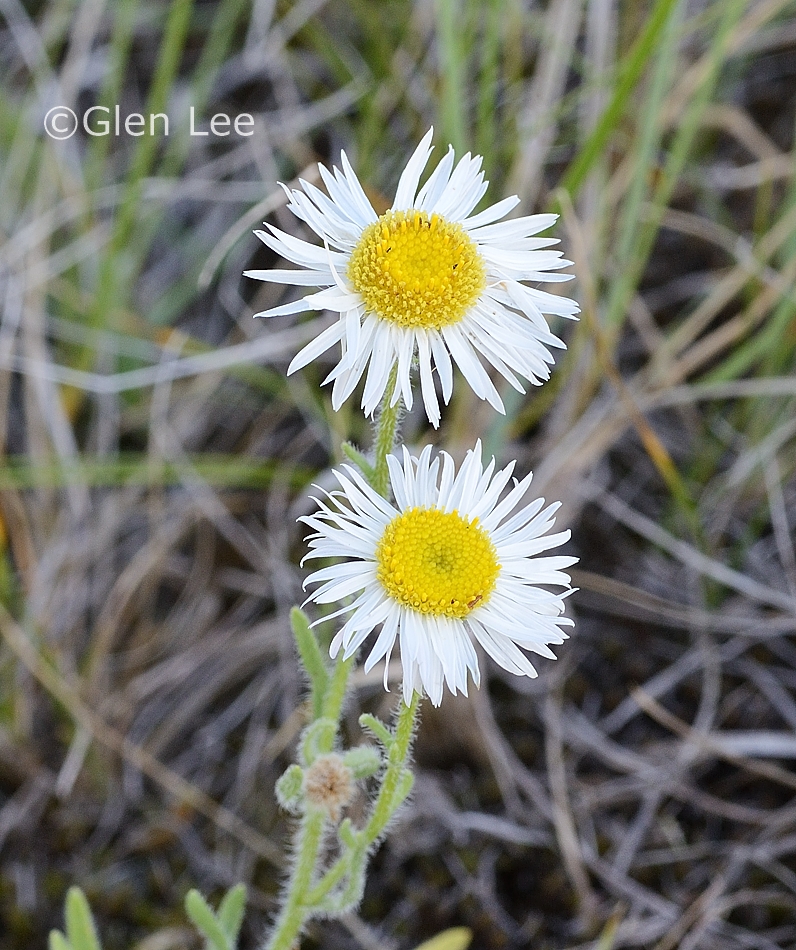
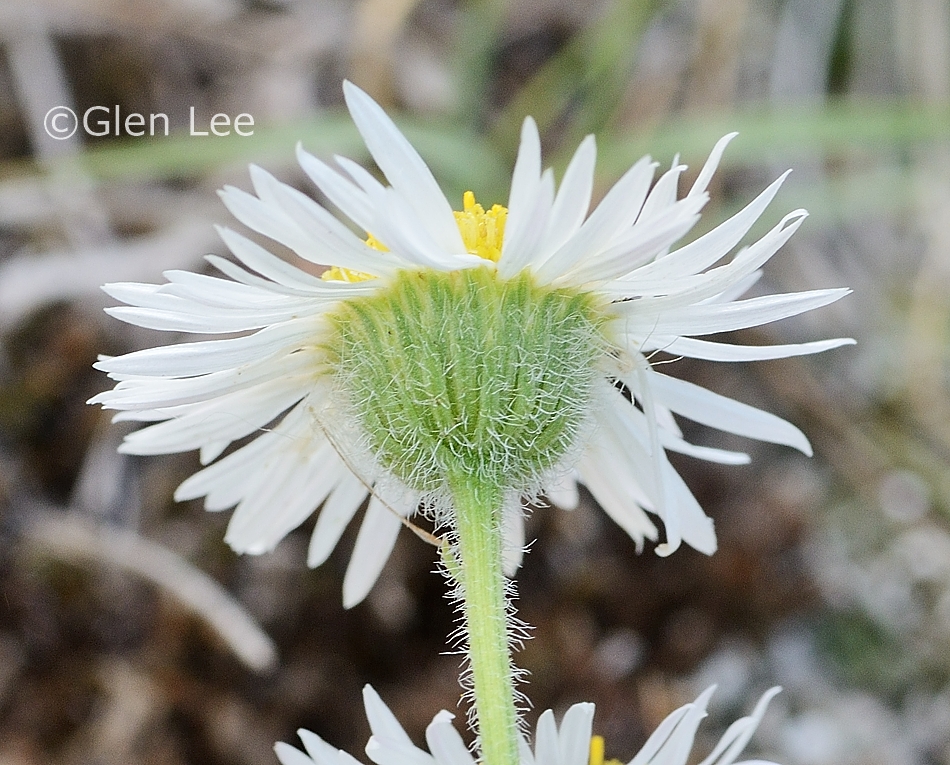
I count three series of bracts.
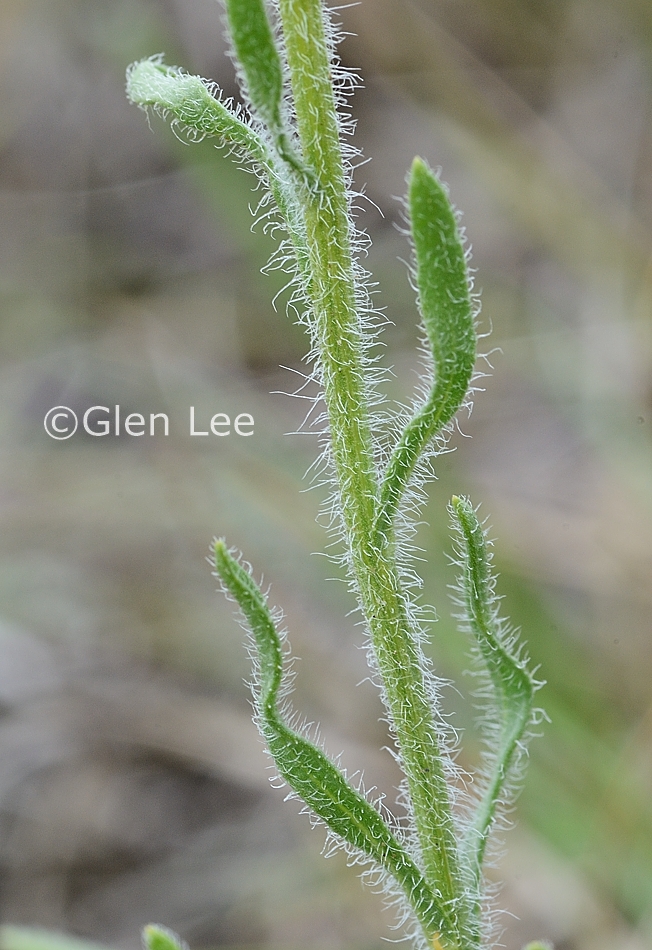
Stem and leaves with long, spreading hairs.
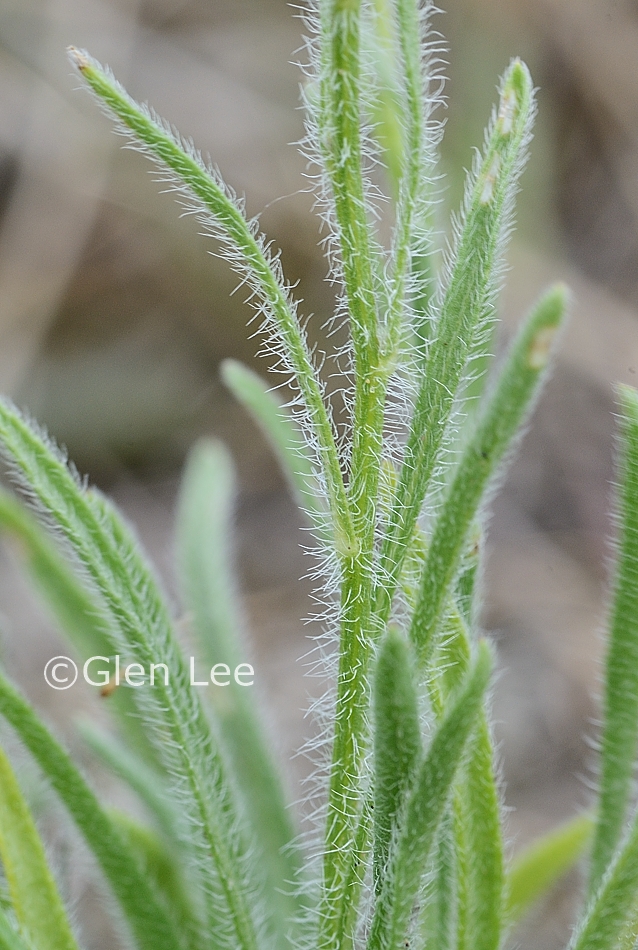
Stem and leaves with long, spreading hairs.
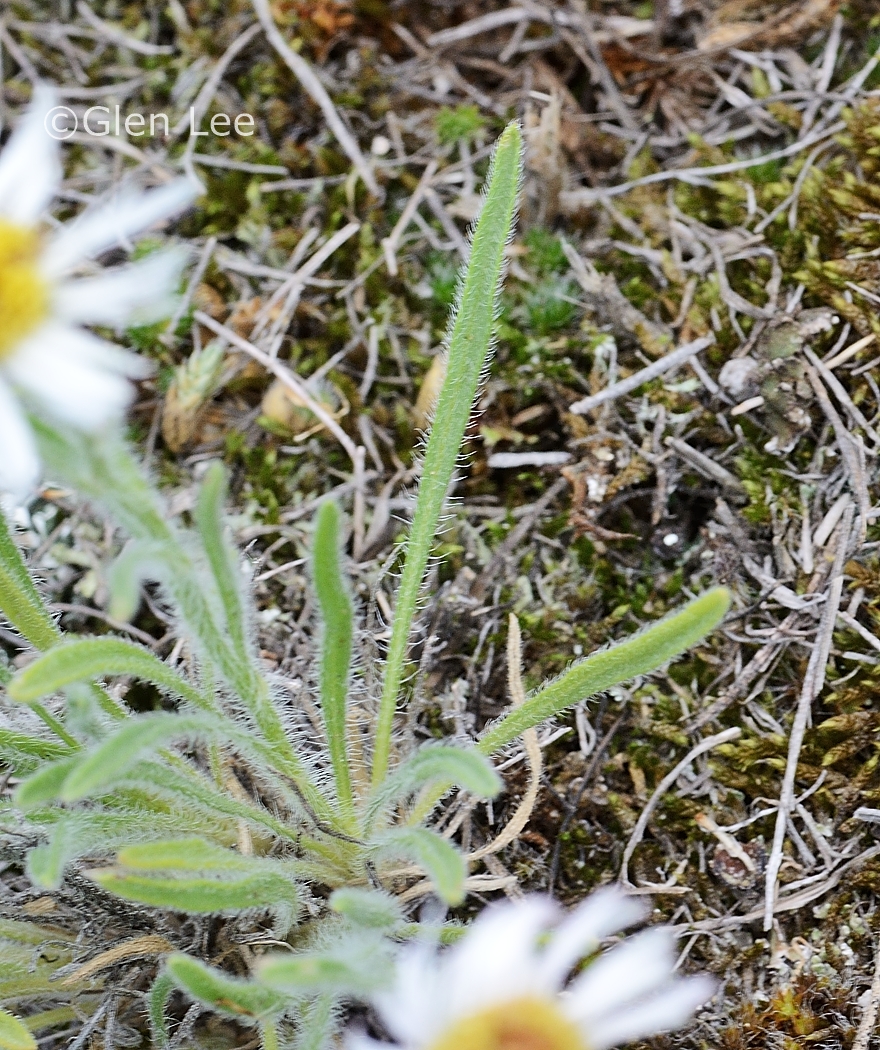
Basal leaf in above photo.
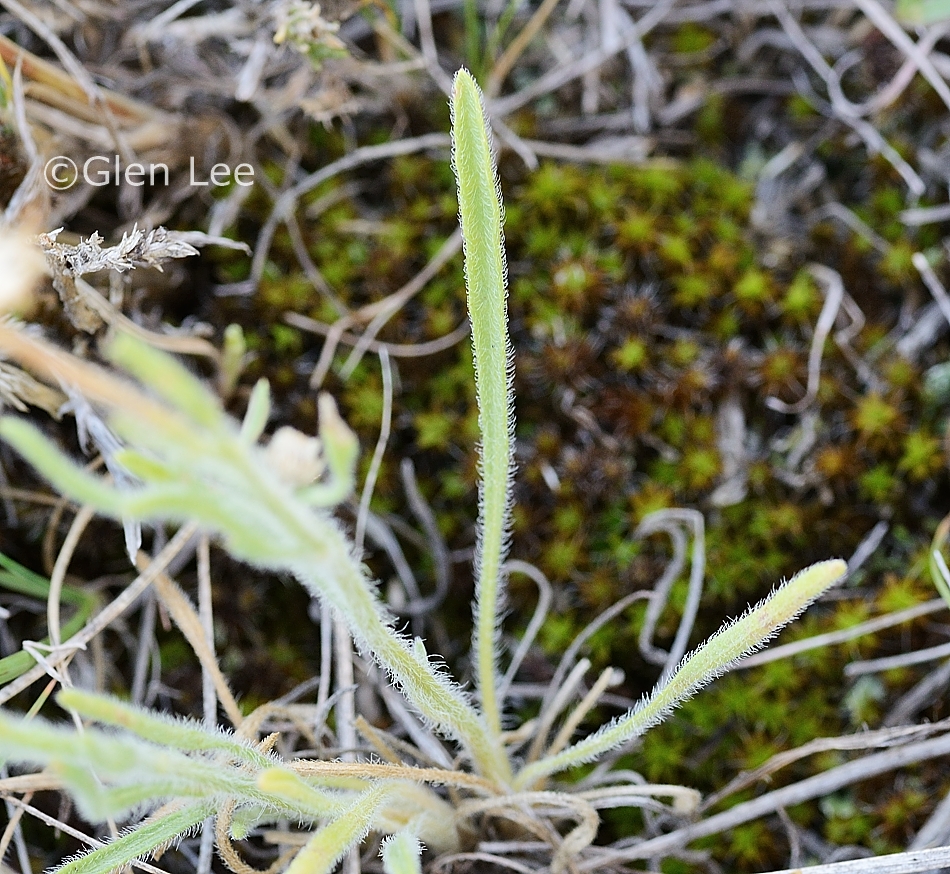
Basal leaf in above photo.
Origin: Native.
General: Short plants, with a many branched caudex from a taproot. Foliage very hairy, the leaves and stem have long, spreading hairs. Foliage grey-green in colour.
Flowers: Flower heads 1 or 2 per peduncle, we measured a flower head at 22 mm diameter. Involucre 4 mm tall, we counted 3 series of bracts.
Leaves: Basal leaves linear to very narrowly linear-oblanceolate. We measured a basal leaf at 50 mm long by 2 mm wide. Stem leaves alternate, linear, reduced in size upwards. We measured a stem leaf at 25 mm long by 1 mm wide.
Height: Budd's Flora lists the plant's height to 20 cm, we measured plants to 11 cm tall.
Habitat: Dry prairies.
Abundance: Ranked as fairly common S4 by the Saskatchewan Conservation Data Centre. I've only seen this plant in a couple of locations in southern SK, in both spots it was very abundant.
Similar species: This plant is similar to
Erigeron caespitosus.
You can distinguish between the two species by examining the basal leaves,
and the plant hairs.
- Leaf width - E. caespitosus has basal leaves more than 3 mm wide,
while E. pumilus has basal leaves 1-3 mm wide (Budd's Flora).
- 3-nerved - E. caespitosus has basal leaves that are
3-nerved, while the basal leaves are E. pumilus are not 3-nerved (Flora
of the Great Plains).
- Spreading hairs - the stems and leaves of E. pumilus have hairs
that are spreading. while the the stems and leaves of E. caespitosus
have hairs that are not spreading (Taxonomic Reminder for Recognizing
Saskatchewan Plants).
When and where photographed: Photos taken June 29th, dry prairie pasture, about 200 km southeast of our home in Regina, SK.